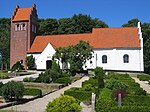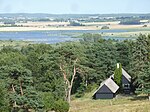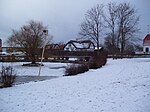Tisvilde
Cities and towns in the Capital Region of DenmarkGribskov MunicipalityNatura 2000 in DenmarkPlantations in DenmarkProtected areas in the Øresund Region

Tisvilde is a small town with a population of 1,412 (1 January 2023) located on the north coast of the island Zealand (Sjælland) in Denmark 60 km (37 mi) in Gribskov Municipality, northeast of Hillerød. Tisvildeleje is the coastal part of Tisvilde. "Leje" roughly translates as "plain" and used to be a fishermen's village. Now all of the fishermen's houses are used as "quintessential" summer residences. The southeast of Tisvilde is referred to as Tibirke. Tisvilde, alongside Hornbæk further to the east, has the highest prices of summer houses in Denmark. A 175 sqn summer house was sold for DKK22 mio. in 2017.
Excerpt from the Wikipedia article Tisvilde (License: CC BY-SA 3.0, Authors, Images).Tisvilde
Tisvilde Bygade, Gribskov Municipality
Geographical coordinates (GPS) Address Nearby Places Show on map
Geographical coordinates (GPS)
| Latitude | Longitude |
|---|---|
| N 56.057777777778 ° | E 12.095 ° |
Address
Tisvilde Bygade 46A
3220 Gribskov Municipality, Tisvilde Lunde
Capital Region of Denmark, Denmark
Open on Google Maps











